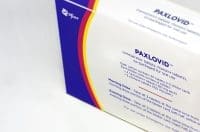Seek support, take your time, and plan strategically.
Editor’s note: This is the second article in a two-part series on nurse job loss. You can read Part 1 at https://www.myamericannurse.com/unplanned-and-unforeseen-nurse-unemployment.
Many nurses never expect to be terminated from their positions, but the likelihood of unplanned and unforeseen unemployment has increased as a result of healthcare restructuring, mergers, and financial constraints. The first article in this two-part series discussed termination components and nurse responses. Part 2 focuses on self-care and strategies for successfully transitioning into a new position.
Self-care
To mitigate some of the stress associated with job loss, take time to grieve the loss, engage in self-care, make connections, and develop resiliency.
Grieve the loss
For many people, employment is a key identity marker. Papa and Maitoza suggest taking steps to move toward acceptance, find meaning in the situation, and understand that feelings of loss and grief are normal. They also recommend moderating job loss effects. For example, a change of scenery might help you make the transition into a new mindset and lay the foundation for a healthy outlook. Perhaps you can afford an inexpensive getaway by staying with a friend or relative for a few days. If you have the financial reserves, take the opportunity to identify what you’d like to do next. If not, consider temporary work (possibly non-nursing) to give you time to find the best fit rather than taking a “rebound” job.
Having a safe place for processing your job loss and working out your feelings is key to health and well-being. Try journaling, seeking spiritual guidance, therapy, or spending time with a trusted friend. Be honest about the emotions you’re experiencing, including bitterness, self-doubt, guilt, shame, anger, and worry. These feelings are all normal. Second-guessing and replaying the loss in your mind are expected, but be gentle with yourself and suspend self-judgment.
Take time to assess yourself for anxiety and depression. Look for changes in sleep patterns and appetite, fluctuating energy levels, and intrusive negative thought patterns. If any of these effects continue over several weeks, recognize that you might need professional help and feel positive about seeking it.
Engage in self-care
Two articles written for a lay audience contain a compilation of healthcare tips that also are helpful for nurses. One recommends incorporating these strategies:
- Aim for a minimum of 30 minutes of exercise, 5 to 7 days a week, for a total of 300 minutes weekly.
- Add 30 more minutes of standing and stretching daily.
- Know your waist-to-height ratio (using online calculators) to assess markers for metabolically active visceral fat.
- Maintain triglycerides below 150 mg/dL.
- Turn off electronics 30 to 45 minutes before bed.
- Decrease sitting time by 1 minute per hour seated.
- Fill half your plate with fruits and vegetables.
- Aim for 7 to 9 hours of sleep nightly for individuals between 18 and 64 years and 7 to 8 hours for those over 65.
- Maintain a blood pressure below 120/80 mmHg.
The other article suggests that steps for protecting one’s heart during a pandemic also are applicable if you’re facing a job loss. In addition to controlling blood pressure and sleeping well, stay active and manage stress by practicing yoga, meditating, listening to relaxing music, stretching, taking nature walks, and breathing slowly and deeply.
Make connections
Connections are valuable for self-care and for stepping into the next season of your professional life. Maintaining work relationships can be helpful for you and your former coworkers, but after a termination, remaining coworkers might be unsure about what they should or shouldn’t do. Terminated employees might consider sending a quick courtesy communication informing colleagues of their departure, unless human resources’ policy prohibits it. Former colleagues may then want to wait a short time so their colleague who’s been terminated has time to process what’s happened before exploring the possibility of friendships outside of work.
Former colleagues can be great references as you apply for new positions. However, ask for permission first. For those who’ve agreed to serve as references, maintain a list with current information on their positions and contact information. Ideally, you should have a list of personal and professional references who you’ve known for at least 5 years.
Volunteering with a professional nursing organization is another great way to network and give yourself purpose. Those you meet in these organizations also may offer additional support and serve as positive role models.
Develop resiliency
Seig describes resiliency (the ability to recover from a challenging situation) as a combination of our thoughts, feelings, and attitudes. Developing resilience can help you get to a better place emotionally, spiritually, and physically before beginning the next phase of your professional life. Barry and Sirois suggest that being peaceful, loving, and engaging in activities that enhance your well-being can help develop resiliency.
Making the transition
Several strategies can help you begin the transition into the next phase of your professional life. Consider conducting a career reassessment, taking steps to prepare for a job search, and identifying resources for finding your next position.
Conduct a career reassessment
Sudden unemployment can lead to uncertainty and concern, but it’s also an opportunity to reassess your career path. Before you begin looking for your next position, take time to regroup and identify what you want from work. (See Reassessment resources.)
Reassessment resources
Several resources, including professional organizations and nursing journals, are available to help you reassess and pivot your career path.
Professional organizations. Many professional organizations, such as the Association of PeriOperative Registered Nurses (aorn.org/career-center/career-resources/career-coaching-services), provide access to career coaching. Reach out for assistance to identify your strengths, set goals, and plan your next steps
Nursing journals. You’ll find career advice in several nursing journals, including American Nurse Journal’s annual Education and Career Guide (myamericannurse.com/category/advisor-series/education-advisor). This resource includes features on job seeking, education, and trending careers.
Start by conducting a career path reassessment to:
- identify your desired work setting
- explore what positions might bring you joy, energy, and passion
- recognize the types of patients you like to work with
- decide on your desired work schedule, salary, and benefits.
Next, make value-added lists, and determine priorities for moving forward. One strategy is to use a pro and con list to assess potential career opportunities. First, write down the pros and cons for each opportunity, then assign every pro or con item a number between 1 and 100. Those items that are most important to you should receive high numbers and those that are least important should receive low numbers. Finally, add the numbers in the pro and the con columns for each opportunity to arrive at a total and compare the results. This exercise can help you determine priorities and values for your job search.
Also take time to evaluate your transferable skills. What skills did you develop in your previous position that can translate into a new environment? To identify these skills, take a personal inventory of your strengths, talents, and gifts. For example, you may be flexible or good at leading teams.
Preparing to seek employment
Looking for a new job is hard work. The more prepared and organized you are, the less stressful it will be. Hannon offers several job-seeking preparation hints, including asking friends and family for an assessment of your strengths and exploring how past experiences might benefit you in a new role.
Prepare for the search
Career expert Kerry Hannon recommends taking these steps as you prepare to begin your job search.
- Find opportunities to improve your skills. Take classes and volunteer for an organization you care about so you can show potential employers that you used your time between jobs productively.
- Take advantage of LinkedIn. Create a profile that highlights your skills and demonstrates your personality.
- Update your resume. Customize your resume to each job application and use it to advertise your skills and assets. Don’t go back more than 10 years when highlighting your accomplishments unless an older event is particularly stellar. Many employers use an applicant tracking system (ATS) to screen resumes before hiring manager review. To create an ATS-friendly resume use a simple, traditional, reverse chronological format; avoid acronyms; and include keywords from the posted job description.
- Investigate potential employers. Learn all you can about the organizations you’re interested in. LinkedIn and the organization’s website will provide information about positions and the people who work there.
- Make connections. Talk to professional colleagues as well as individuals from your neighborhood, community, or faith group about your job search. You never know who’s in a position to help or who knows someone who may be of service.
- Stay active. Physical activity, interacting with others, and positive thinking will improve your attitude and outlook, which will be evident during interviews (even on Zoom).
- Be curious. Employers find curiosity appealing, so ask questions during interviews. You’ll demonstrate your interest in the organization and show that you’re looking toward the future.
- Consider salary options. You may not be able to get the same salary you had at your previous job, but you can negotiate options such as flextime and extra vacation.
Identify resources
Now is a great time to network. Cast a wide yet specific net for yourself. Although the pandemic has changed the hiring process and some job availability, many career opportunities exist.
Even if you’re currently employed, identifying career transition resources now will help you prepare for the time when a job change is needed or desired. Learn about training or requirements for jobs that may be of future interest. In addition, consider taking advantage of new skill training, volunteering for special projects or committees, and conducting annual resume updates. Each of these steps will help position you for a job search if one is needed.
Redefine yourself
Unplanned and unforeseen unemployment can be scary and challenging. However, it’s also an opportunity to step out of your comfort zone, explore different roles and settings, and learn new things about yourself. No matter your current employment status, it never hurts to keep up with nursing trends and explore other positions. Help is available to make the transition to a new position, and it’s an opportunity to redefine yourself.
References
Barry LL, Sirois MA. Soul habits. Am Nurse Today. 2017;12(10): 54-5.
Hannon K. Tips for finding a job when you’re over 50. October 18, 2020. kerryhannon.com/?p=8507
Papa A, Maitoza R. The role of loss in the experience of grief: The case of job loss. J Loss Trauma. 2013;18 (2):152-69. doi:10.1080/15325024.2012.684580
Prosser SJ, Metzger M, Gulbransen K. Don’t just survive, thrive: Understanding how acute psychiatric nurses develop resilience. Arch Psychiatr Nurs. 2017;31(2):171-6. doi:10.1016/j.apnu.2016.09.010
Sieg D. 5 ways to sleep your way to resilience. March 9, 2017. dianesieg.com/5-ways-sleep-way-resilience
Phyllis Hooten is a freelance writer in Hewitt, Texas. Aida J. Sapp is a psychiatric mental health nurse practitioner at Baylor Scott & White Health in Temple, Texas.


















